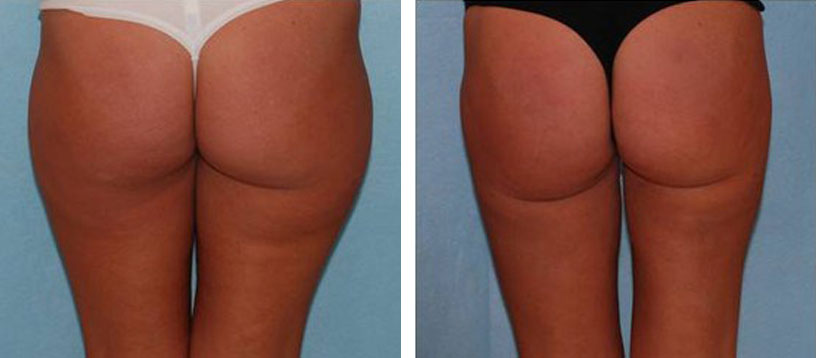Thigh Lift in Saudi Arabia
Search and Compare the Best Clinics and Doctors at the Lowest Prices for Thigh Lift in Saudi Arabia

Find the best clinics for Thigh Lift in Saudi Arabia
No clinics available
Turkey offers the best prices Worldwide
Price: $ 758

- Home
- Saudi Arabia
WHY US?
At Medijump, we're making medical easy. You can search, compare, discuss, and book your medical all in one place. We open the door to the best medical providers worldwide, saving you time and energy along the way, and it's all for FREE, no hidden fees, and no price markups guaranteed. So what are you waiting for?

Free

Best Price

Widest Selection

Risk-Free
What you need to know about Thigh Lift in Saudi Arabia

Thigh Lift, also known as thighplasty, is a cosmetic surgery to improve and reshape the appearance of the thighs by reducing excess skin and fat. The goal of a thigh lift is to contour your thighs so that they look in proportion with the rest of your body as well as to eliminate sagging skin due to aging, pregnancy, or significant weight loss. If you want your thighs to be more youthful-looking or proportionate to your body image, and fitness and weight control have not worked for you, then you can consider this procedure.
What Does the Procedure Involve?
A thigh lift is performed under general or epidural anesthetic. Your surgeon may create an incision in the groin area, then they may remove excess skin and fat. After that, your surgeon reshapes and tightens the underlying tissue, and the remaining skin is smoothed, lifted, and stitched into place at the incision site. Your doctor may also combine the procedure with liposuction.
How Long Should I Stay in Saudi Arabia for a Thigh Lift Procedure?
Since thigh lift is often performed as an outpatient procedure, you should be able to leave the hospital on the same day of the surgery. However, the recommended total length of stay in Saudi Arabia is about 14 days since your doctor needs to remove the stitches within two weeks following the surgery.
What's the Recovery Time for Thigh Lift Procedures in Saudi Arabia?
You can expect to go back to work within 7 to 10 days after your surgery, but the full recovery period until you can resume physical activity may take about 4 to 6 weeks. Since the recovery period can vary from one person to another, make sure to ask your doctor about your recovery timeline, including when you can start doing intense exercise, heavy lifting, and other vigorous activities.
What sort of Aftercare is Required for Thigh Lift Procedures in Saudi Arabia?
You will be given specific instructions regarding medication, wound care, diet, and exercise. You will likely need to attend a follow-up checkup with your plastic surgeon to monitor your healing progress. After you are fully healed, it is important for you to follow a healthy diet, have regular exercise, and maintain a healthy weight to retain the result of your thigh lift.
What's the Success Rate of Thigh Lift Procedures in Saudi Arabia?
A thigh lift is generally safe and the success rate is high. However, you need to be aware that the procedure has some side effects and risks, such as poor wound healing, infection, bleeding, seroma, asymmetry, deep vein thrombosis, skin loss, persistent pain, skin discoloration, numbness, recurrent looseness of the skin, and allergic reaction to the anesthetic.
Are there Alternatives to Thigh Lift Procedures in Saudi Arabia?
If you do not like the idea of undergoing surgery or you are not an ideal candidate for the procedure, you may want to consider the alternatives, including liposuction, Vaser liposuction, and laser skin tightening. Consult with your plastic surgeon about which procedure is better for your situation.
What Should You Expect Before and After the Procedure
Before a tight lift, your thighs may look dimpled, saggy, and flabby. You may not feel confident about the appearance of your thighs because they are not proportionate to your body image. After the procedure, you can immediately see a positive change to your thighs. Your thighs will look more youthful and firmer.
Whilst the information presented here has been accurately sourced and verified by a medical professional for its accuracy, it is still advised to consult with your doctor before pursuing a medical treatment at one of the listed medical providers
No Time?
Tell us what you're looking for and we'll reachout to the top clinics all at once
Enquire Now

Popular Procedures in Saudi Arabia
Prices Start From $26

Prices Start From $113

Prices Start From $931

Prices Start From $275

Prices Start From $76

Prices Start From $5

Recommended Medical Centers in Saudi Arabia for procedures similar to Thigh Lift

- Interpreter services
- Translation service
- Religious facilities
- Medical records transfer
- Medical travel insurance
- Health insurance coordination
- TV in the room
- Safe in the room
- Phone in the room
- Private rooms for patients available

- Interpreter services
- Translation service
- Religious facilities
- Medical records transfer
- Medical travel insurance
- Health insurance coordination
- TV in the room
- Safe in the room
- Phone in the room
- Private rooms for patients available

- Interpreter services
- Translation service
- Religious facilities
- Medical records transfer
- Medical travel insurance
- Health insurance coordination
- TV in the room
- Safe in the room
- Phone in the room
- Private rooms for patients available

- Interpreter services
- Translation service
- Religious facilities
- Medical records transfer
- Medical travel insurance
- Health insurance coordination
- TV in the room
- Safe in the room
- Phone in the room
- Private rooms for patients available
Thigh Lift in and around Saudi Arabia
Introduction
The Kingdom of Saudi Arabia is the birthplace of Islam and is home to the holy Muslim city of Mecca, all Muslims are required to make a pilgrimage to this city at least once during their life and non-Muslims are forbidden from the city. There are other wonders to be found here, from the Red Sand Dunes in Riyadh, Jeddah’s coral architecture, to the azure waters of the Red Sea. In the last few years, the Kingdom has developed a plan to encourage international patients to seek treatment at its medical centers. The healthcare sector in the country has constantly improved and developed and the country has all the attributes to have a successful medical tourism industry, such as ultra-modern hospitals that are well-equipped with cutting-edge technology, foreign-trained doctors and specialists, and a well-established private healthcare sector.
Popular Cities and Regions in Saudi Arabia
The capital city is Riyadh, which is one of the wealthiest cities in the world. It offers amazing attractions for tourists, such as the Masmak Fortress, the National Museum, the Kingdom Center, the Sky Bridge, Riyadh Zoo, and the Antiquities Museum. Another popular city is Jeddah, which is called the Bride of the Red Sea. It’s a large metropolitan city with an incredible waterfront and beautiful old town. It’s the traditional gateway to Mecca, as well as the historic crossroads of traders and pilgrims. Most tourists visit this city to admire its World Heritage Red Sea architecture, explore its lively souq, relax in its laid-back coastline, and try its world-class cuisine.
Transport in Saudi Arabia
King Fahd International Airport is the largest airport in Saudi Arabia, located in the city of Dammam. It serves flights to and from numerous cities in Europe, Asia, and the Middle East. Domestic flights are the best way to travel around this country. Buses, taxis, and car rental are widely available for travel inside the cities.
Visas in Saudi Arabia
Almost all nationalities need to have a visa to visit Saudi Arabia, except for citizens of Bahrain, Kuwait, Oman, and the UAE. eVisa or visa on arrival is available for holders of passports of 51 countries, including all EU countries, the US, the UK, and Japan. Most other countries need to obtain a visa prior to arrival.
Weather in Saudi Arabia
Saudi Arabia has two seasons, summer and winter. Summer (April – October). The weather is extremely hot and humid. The average temperatures range between 40oC to 45oC, but it can soar to 49oC. Winter, from November to March, brings mild temperatures, with an average of 20oC during the day and 10oC during the night.
Additional Info
- Local Currency: Saudi riyal (SAR) is the currency. 1 USD is equivalent to 3.75 SAR.
- Money & Payments: ATMs are widespread and credit cards are widely accepted. There is no tipping culture.
- Local Language: Arabic is the official language, but English is widely spoken.
- Local Culture and Religion: Women do not need to wear abayas (a long black, robe-like dress) anymore, except at religious sites. However, both men and women have to wear modest clothing and refrain from showing too much skin. Islam is the state religion and the country’s law requires all citizens to be Muslim. Any non-Muslims who want to acquire Saudi Arabian nationality will have to convert to Islam. There are Hindus, Christians, and Buddhists in the country but all of them are foreign nationals.
- Public Holidays: The most celebrated public holidays in Saudi Arabia are Eid Al-Fitr, Eid Al-Adha, ad National Day.
Popular Searches
- Plastic Surgery in Thailand
- Dental Implants in Thailand
- Hair Transplant in Thailand
- Breast Augmentation Thailand
- Gastric Sleeve in Thailand
- Gender Reassignment Surgery in Thailand
- Laser Hair Removal in Bangkok
- Botox in Bangkok
- Dermatology in Bangkok
- Breast Augmentation in Bangkok
- Coolsculpting in Bangkok
- Veneers in Turkey
- Hair Transplant in Turkey
- Rhinoplasty in Turkey
- Stem Cell Therapy in Mexico
- Rhinoplasty in Mexico
- Liposuction in Mexico
- Coolsculpting in Tijuana
- Rhinoplasty in Korea
- Scar Removal in Korea
- Gastric Sleeve in Turkey
- Bone Marrow Transplant in India
- Invisalign in Malaysia
- Plastic Surgery in the Dominican Republic
- Tummy Tuck in the Dominican Republic
- Plastic and Cosmetic Surgery in Poland
- Rhinoplasty in Poland
- Hair Implant in Poland
- Dental Implants in Poland
- IVF in Turkey